Pasties, Pisco and Purple Potatoes
Week three – and our randomly chosen country is Peru! What springs to mind? Guinea pigs, llama, potatoes, mountains… when I canvassed opinion the most common answer I got was Paddington Bear. Surprisingly marmalade sandwiches are not eaten widely in Peru, so what to cook?
I first ate Peruvian food at a restaurant called Fina Estampa near London Bridge in the early 90s and two things stood out – Pisco Sours and Ceviche. The former is an awesome cocktail made with Pisco, sweet and sour with an attractive froth that sneaks up on you. You can remain quite coherent while at the same time discovering your legs aren’t functioning as well as they should. Ceviche is a splendid dish of fish “cooked” in lime with chillies and coriander, fresh, punchy and fragrant – an excellent alternative to sushi.
Peruvian food has been cited as one of those “next new thing” cuisines recently with a spate of new restaurants in London – Ceviche in Soho, Lima (voted best new Latin American Restaurant by Time Out in 2012) and Coya, which has a dedicated Ceviche bar and a Pisco bar.
Funnily enough this was not the first time I’ve put together a Peruvian meal. I tackled Heston Blumenthal’s version of Black Forest Gateau a while back and a new album The Roots of Chicha: Psychedelic Cumbias From Peru
For some reason that escapes me right now I combined the two into a Peruvian meal with ceviche, duck with rice and so many Pisco sours that in the end I forgot to take the Black Forest Gateau out of the freezer to come to room temperature and we ended up with a very expensive Vienetta.
So, I already had a Peruvian cookery book – The Food and Cooking of Peru: Traditions – Ingredients – Tastes – Techniques – which offers a great insight into the most popular dishes and the history of the cuisine.
The Incan empire was the first major civilization in the country and by the mid-15th century there was a population of around 11 million people surviving on a diet that centred on corn and the occasional coca leave just to take the edge off.
Everything changed with the arrival of the Spanish in 1530. The Columbian exchange is the most profound event in the history of food, arguably, ever bringing a wave of European influences into the sub-continent and introducing corn, potatoes, tobacco, chocolate, chillies and a host of new food products into Europe.
The Europeans brought another influence to Peruvian cuisine with the African slaves they brought to work for them, while the abolition of slavery in the 19th century brought a wave of Chinese immigrants – and their food – to the country.
Nobu
I also remembered that, although he was born in Japan, Nobu actually developed many of his trademark dishes when he opened his first restaurant in Lima in the 70s prior to being discovered by Robert De Niro, his partner in the highly successful and seriously pricey Nobu restaurant chain. His menus are still influenced by South American ingredients and techniques and I wanted to use his Nobu Now cookery book as my mother in law bought it for me two years ago and I haven’t cooked anything from it yet!
Ask A Local
I thought it would be fun where possible to get in touch with natives of each country to find out what real people actually eat and drink. Some cookery books romanticize food and drink and make it seem like the country you’re writing about are always cooking these wildly exotic, colourful dishes when in fact they subsist on pizza and donuts like everyone else.
The first person I got in touch with is London-based chef and cookery teacher, Fabricio Cano. Originally from Peru he recommended the following:
“For breakfast we always have Tamal, Empanada, Pan Con Chicharron (pork with bread) with a nice coffee. Usually Ceviche, Carapulcra (pork and peanut stew), Anticucho (ox heart skewers) are for lunch or dinner. For puddings we have Suspiro A La Limeña (Sigh Of A Lima Woman!), Alfajores (caramel biscuits), Mazamorra Morada (made with purple corn) Y Arroz Con Leche (rice pudding) there are other puddings that are from the time when the Spaniards lived in Peru too.”
You can watch some of Fab’s videos here
Another Peruvian friend of a friend, Javier Del Sol Cusato, had this to say:
“Your menu could include Lomo Saltado (beef with fried potatoes), Aji De Gallina (chicken and potatoes), Arroz con Pollo, or Carapulcra. From these dishes, maybe the easiest to prepare is Lomo Saltado, and also considered one of the top three most popular dishes for the Peruvian population.
A typical breakfast is the Chicharron. It is fried pork rinds eaten with bread, with Salsa Criolla (a sauce prepared with onions and chili) and Sweet Potato. Normally we eat this on the weekend, and during the week a continental breakfast at home.
For traditional puddings, it could be Arroz Con Leche (rice pudding) or Mazamorra Morada (pudding with by purple corn). Both are very good and also you could put half and half on your plate – they combine well too!
For an alcoholic drink, I would say Pisco Sour and for a non-alcoholic drink Chicha Morada.”
Another friend of a friend, Tom Jolly, who works in Peru got in touch while on the bus crossing the Andes to Cusco from Lima, which I thought was pretty cool.
“There are masses of cool things. Here is one from each of the three main regions: Juanis from the Amazon are boiled rice with chicken or fish and veggies, in a ball wrapped normally in a banana leaf. Para Relleno – stuffed potato – is a popular dish from the Andes… From Lima on the coast there’s Causa Limena… basically it’s a tuna mayonnaise mix layered with mashed potato. Guinea pigs are of course eaten on special occasions.
Don’t forget that the first and last drops of a drink are always offered back to Pachamama (Mother Earth) as thanks for offering up the food. Suerte! From the Pacific Ocean Pan Americano Highway at Sundown – spectacular!”
Can You Get Llama In Elephant & Castle?
One of the things I love about cooking from around the world is finding new ingredients that I’ve never used before – new tastes, new techniques, new sensations. Like the first time I tried fresh and hot Tom Yum with lime leaves and galangal, or tongue-numbing Szechuan peppers.
I wanted to try and get purple corn powder to make Chicha Morada – a sweet, spicy drink made from purple corn boiled in water and flavoured with cinnamon, cloves and sugar. I also wanted to track down chuño, potato that has been freeze-dried – originally a five-day process involving leaving potatoes out in the cold Andean night air, trampling them to remove the skins and most of the water, and then allowing them to dry in the sunshine. They can then, apparently, last years.
The final thing I wanted to hunt down was Inca Kola. Like Irn Bru (see my Scotland post), Inca Kola is one of the few soft drinks to outsell Coca Cola in its homeland (or was until Coke bought a stake in the company) and is flavoured with lemon verbena. A weird yellowy colour, I’ve seen it described as somewhere between lemongrass and cream soda.
Try as I might the only place I could find the ingredients were at a mini market in front of the Elephant and Castle shopping centre. Apparently there is a big Latin American community living there. Sadly I didn’t have the time to visit this time so I had to settle for what I could find online and locally.
I couldn’t find any of the more unusual ingredients online but I did find Peruvian varieties of chillies from a company called www.ChilliesOnTheWeb.co.uk.
I ordered the Aji Amarillo and Aji Panca for two different chillies sauces for a dish of Ox Heart Skewers – see below.
I also found a surprising range of Peruvian stuff available locally including:
- Peruvian coffee
- Willie’s Peruvian Gold chocolate
- Purple potatoes (originally a Peruvian variety but grown here now)
- Cusquena Beer – imported from Lima.
On with the cooking:
Breakfast – Empanaditas
Breakfast was an easy choice really. Much as I love a fry up, the idea of fried pork skin first thing was too much but pasties… now that’s a different story.
The empanada is said to have been brought to the Americas with Cornish miners in the late 19th century and spread all the way from Alaska to Patagonia by Cornishmen working in the New World mines. It’s the perfect workman’s food all wrapped in a handy pastry contrainer.
Recipe
This makes around 24 pasties of varying sizes (see picture)
Filling:
- Vegetable oil
- 500g mince
- 1 large red onion, finely chopped
- small handful of raisins
- 150g black olives, pitted and chopped finely
- 1 cup of water
- 2 hard-boiled eggs, chopped
Pastry:
- 450g self-raising flour
- ½ tsp salt
- 150g butter
- 60ml water
- Icing sugar to taste
Make The Pastry
- Add the salt to the flour
- Rub in the butter until the mixture looks like rough breadcrumbs
- Add the water a little at a time and knead until everything comes together into a smooth but not sticky dough
- Cover the bowl and leave to rest while you make the filling
Make The Filling
- Turn the oven on to 200ºC
- Fry the mince until brown
- Stir in onion until starting to caramelize
- Add raisins and olives
- Add water, season and simmer for 10 minutes
Make The Empanaditas
- Roll out the dough on a floured surface until it’s 2 – 3mm thick
- Use a round cutter around 6cm in diameter to cut out loads of circles
- Spoon the mixture in – it needs to be completely cooled otherwise it melts the butter in the pastry and every gets really sloppy.
- The “crimp” is the tricky bit. Wet the edge of one half of the pastry circle. Take the whole thing in your left hand, the side with the wet edge is top most. With your other hand pinch the dry edge together into a peak and then press forward onto the wet edge. Press it firmly to seal. You should have 5 – 6 little crimps holding everything tightly together.
- Place on an oiled baking tray and bake for 15 minutes or until golden. I checked every few minutes and mine were done in 10.
- Leave to cool slightly and then dust with icing sugar.
Lunch – Ceviche & Purple Potato Crisps
Fresh fish and seafood is essential in Peru. The Incans employed a network of runners called “chasquis” who could relay fish from the coast to Cusco over 200 miles inland. The national dish is Ceviche and, given the importance of fresh fish, it tends to be more popular on the Pacific coast.
The recipe is easy but if you’ve never made it before it requires a little bit of a leap of faith that it’s going to taste OK. Just remember, it’s not quite as raw as sushi and you’ll be fine.
Science lovers will note that while the fish is not actually cooked, it goes through a process called denaturation where the twisted and folded proteins are unravelled into simpler shapes. This is the same as what happens when heat is applied – another type of denaturation. The way the fish goes opaque in the lime is effectively the same as when you cook egg white.
Ingredients:
- 500g white fish – sea bass, halibut, coley – the fresher the better. It’s really not worth doing unless it’s really fresh.
- ½ red onion sliced finely
- 1 chilli (you can use a mild chillie like the Aji Panca mentioned above)
- 1 celery stick sliced finely
- 150 ml of fresh lime juice
- Lettuce leaves – to serve
- Handful of chopped coriander
Serve with – Boiled sweet potato, Corn on the cob
Method
- Cut the fish into bite-sized chunks and chuck in a bowl with everything else.
- Add the lime juice, stir and leave to marinate for 15 minutes
- Stir again and leave to marinate for another 15 minutes
- If the fish has gone opaque it’s ready to serve – wait a bit longer if it’s translucent.
We also served our Ceviche with home-made purple potato crisps – which was just as well as pickled fish was a step too far for the kids.
Pisco Sours
As I have intimated, you cannot even contemplate a Peruvian meal without a Pisco Sour. In fact I would suggest it should be the driving force behind trying to emulate my Peruvian experiments here. I would even go further and suggest that Pisco Sour is one of the world’s finest cocktails, up there with a Marguerita, Daquiri or Collins.
Pisco is a type of grape brandy, similar to but lighter and smoother than grappa (although grappa is a worthy replacement in the cocktail if you can’t find Pisco).
Method
- 8 parts Pisco
- 4 parts lime juice
- 3 parts light syrup (I use Agave nectar sometimes but slightly less)
- 1 egg white
- 1 dash bitters
Shake hard with ice and strain into a glass – the egg white should be very frothy, if it’s not reshake immediately
Put a dash of bitters on the foam for a little colour
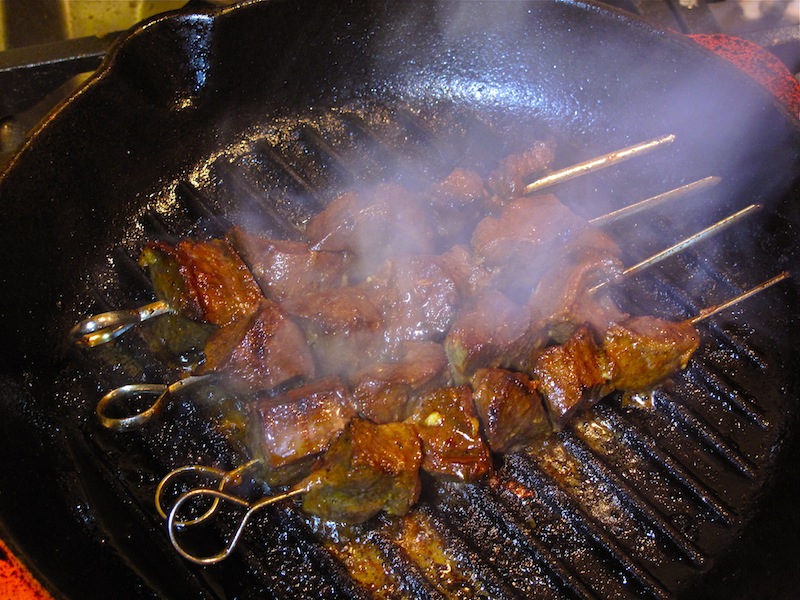 Anticuchos – Ox Heart Skewers
Anticuchos – Ox Heart Skewers
Classic Peruvian street food, I was really surprised at how delicious these were. I’ve never eaten heart before and was worried it would be really strongly flavoured but I found it was like a slightly chewy (in a good way) steak, but at a fraction of the cost.
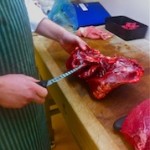 You need to marinate the heart well in advance to tenderise it before threading the chunks on to the skewers.
You need to marinate the heart well in advance to tenderise it before threading the chunks on to the skewers.
1 ox heart makes about 20 – 30 skewers – I’ve still got half a heart left in my freezer. God knows what I’ll use that for…
For the marinade:
- 4 cloves of garlic
- 3 tbsp chilli sauce (or tomato ketchup if your kids are wusses like mine)
- 250 ml red wine vinegar
- 1tsp ground cumin
- 1 tsp smoked paprika
- salt and pepper
- Pack of wooden skewers
If you can’t face cleaning all the veins and sinew from the heart get your butcher to do it – or your 6 year old daughter. It’s easy to do yourself, just cut out all the bits you don’t fancy eating.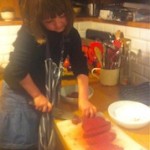
- Chop into 2cm cubes and put everything in a bowl and stir
- Leave for at least 12 hours, preferably longer
- Soak the wooden skewers at the same time
- To cook barbecue is probably the best but given that it’s February I used a grill pan with the cooker hood turned up to max.
- Pre-heat the pan while you thread 4 – 6 pieces of meat on each skewer, stick an oven on a ‘warming’ setting to keep the cooked ones warm while you finish the rest.
- Blend in around 250ml of oil into the marinade for brushing during cooking
- Cook around 3 – 4 skewers at a time turning regularly so you get those nice grill marks all over
- Each one takes around 10 – 15 minutes.
Serve with Chillie Sauces
Chillie Sauces – Nobu Style
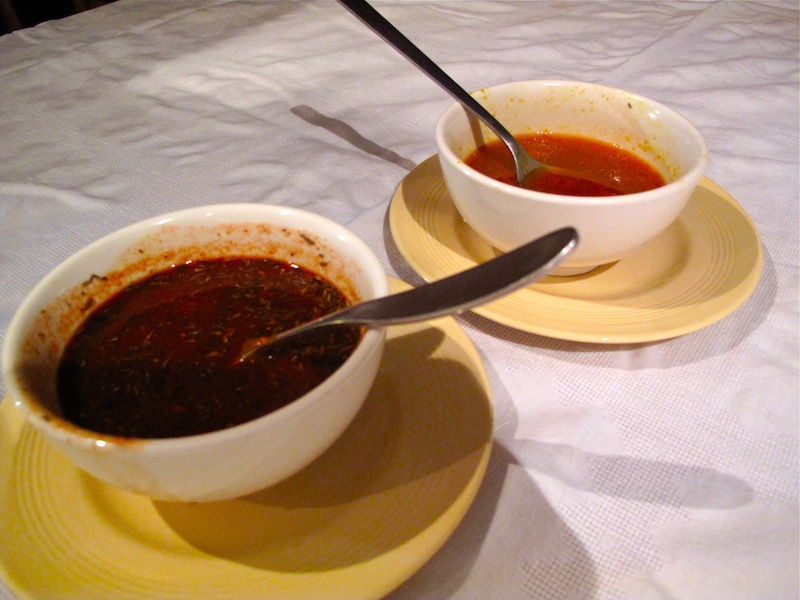 These sauces were excellent and actually not that hot, I’m not sure whether the varieties are supposed to be mild or whether it was just the batches we had but it was like having all the flavour of the chillie with none of the heat. I mixed the two together and have been using it as my go-to chillie sauce for the last three weeks.
These sauces were excellent and actually not that hot, I’m not sure whether the varieties are supposed to be mild or whether it was just the batches we had but it was like having all the flavour of the chillie with none of the heat. I mixed the two together and have been using it as my go-to chillie sauce for the last three weeks.
Chop off the stalks, deseed and then soak around 5 – 6 of each type of chillie in hot water until soft then use a blender to puree with the other ingredients. These sauces are all about the chillies:
Red Anticucho Sauce
- AJI PANCA CHILLIES
- Pinch dried oregano
- 3 tbsp sake
- 1.5 tbsp rice vinegar
- 3 cloves of garlic crushed to a paste
- ½ tsp ground cumin
- salt & pepper to taste
- 2 tbsp vegetable oil
Orange Anticucho Sauce
- AJI AMARILLO CHILLIES
- 3 tbsp rice vinegar
- 1 tbsp soy sauce
- 3 tsp lemon juice
- 2 tbsp vegetable oil
Carapulcra
To me this is still a mysterious dish. I wasn’t that pleased with my version but, having never tried it, I don’t think I balanced the flavours very successfully.
I’m not going to publish a full recipe here but would like to share the video below:
Ingredients
- 500g Papa Seca/Chuno – I used potatoes, but traditionally they use dried potato or chuno mentioned above
- 600g Pork Shoulder
- 1 large onion, chopped
- 3 cloves garlic, crushed
- 60 ml aji panca pureed
- 400ml chicken/pork stock
- 100ml red wine
- 100g roasted, ground peanuts
- 1 tsp cumin
Essentially it’s a pork stew and I used belly pork, which seemed too fatty and not a nice textural contrast with the peanuts. I also omitted the chilli sauce in favour of tomatoes – nowhere near as nice – the chilli sauce is essential. I then made another mistake of adding chocolate and cinnamon which I’d read about in another recipe resulting in a car crash of flavours.
Don’t make my mistakes – learn Spanish and use the recipe in the video.
Alfajores
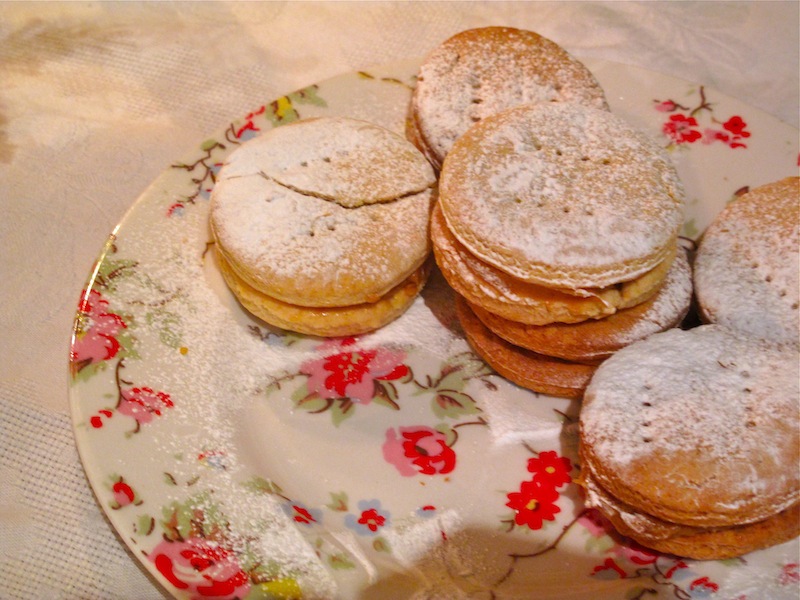 Finally – the pudding. We served these little caramel filled biscuits with our Machu Picchu blend coffee – they’re very filling and not that sweet, but very moreish. We also had enough left over for the kids packed lunches for the next week – result.
Finally – the pudding. We served these little caramel filled biscuits with our Machu Picchu blend coffee – they’re very filling and not that sweet, but very moreish. We also had enough left over for the kids packed lunches for the next week – result.
Makes about 16 – 20
For the dulce de leche filling:
- 350ml sweetened condensed milk
- 350ml evaporated milk
- 1 can of each basically.
Bring to the boil then turn to a gentle heat, stirring continuously for about 45 minutes – 1 hour. It should be thick enough to stand a spoon in and a rich caramel colour.
For the biscuits
- 250g self-raising flour
- 250g corn flour
- 50g icing sugar
- 100g butter
- 1 egg yolk
- 1 tbsp milk
- Oil a large baking tray and line with baking parchment
- Sift the flours and sugar into a bowl and rub in the butter until it goes like breadcrumbs
- Add the egg yolk and milk until it comes together to a soft but not sticky dough
- Roll out the dough to about 4mm thick and use a 4cm round cutter to cut the biscuit shapes.
- Prick with a fork twice and then bake for 20 minutes or until golden
- Spread fairly thickly with the dulce de leche and sandwich together
Buen Provecho!
Music:
Mickey Gonzalez – Inkaterra
The Soul Of Black Peru
The Roots Of Chicha – Psychedelic Cumbia Party
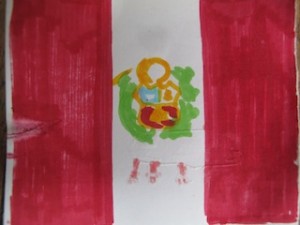


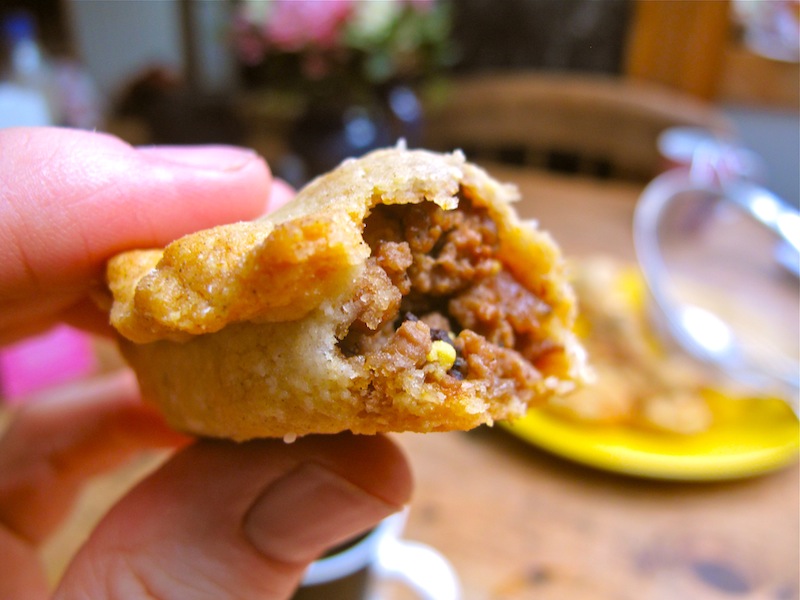
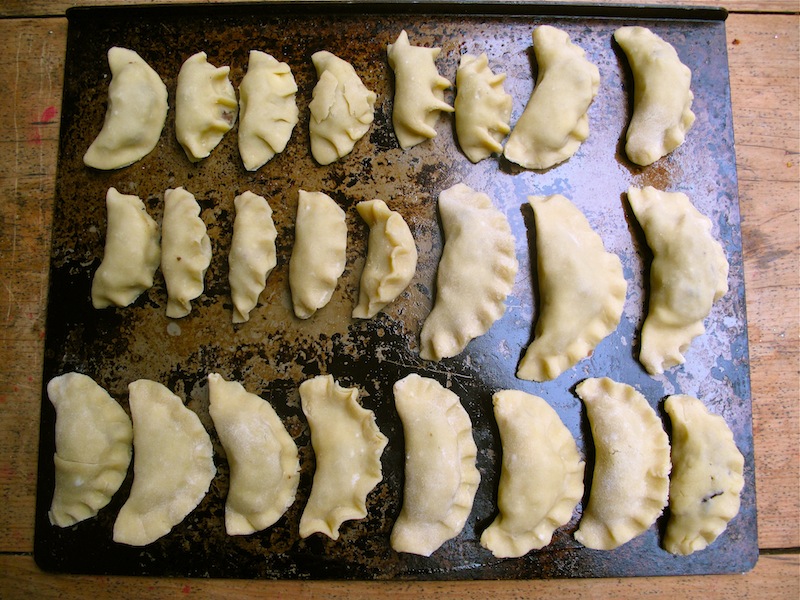
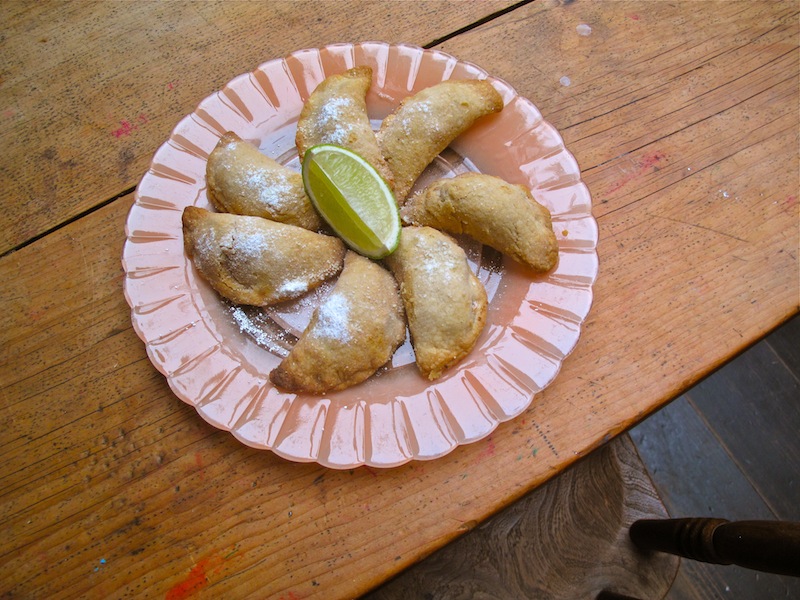
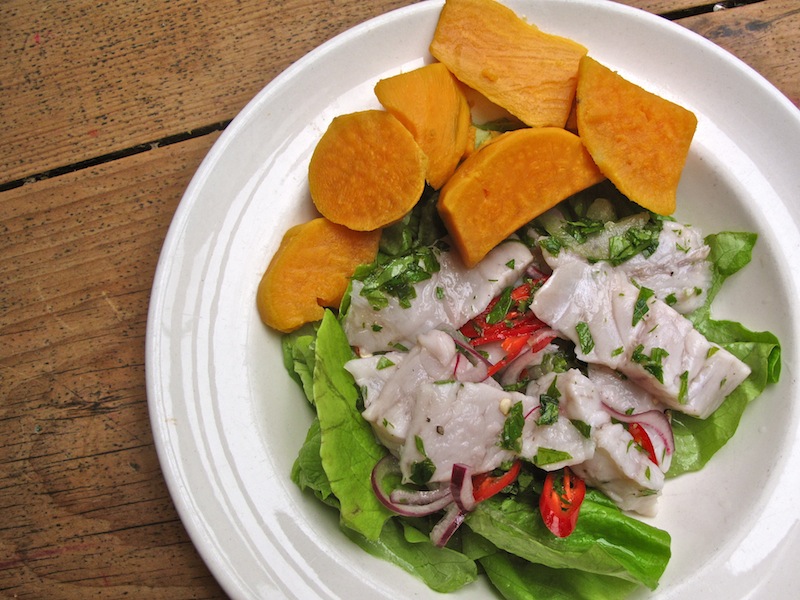
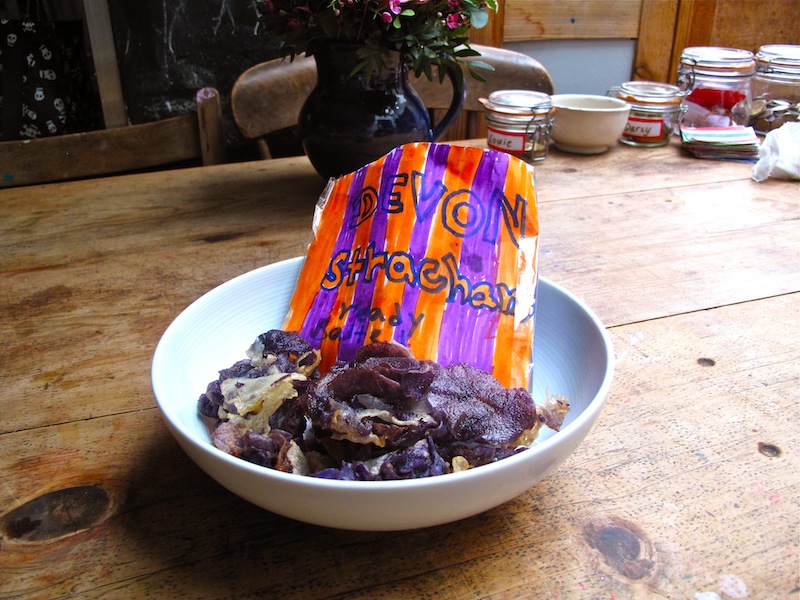
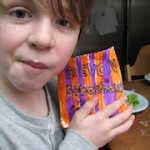


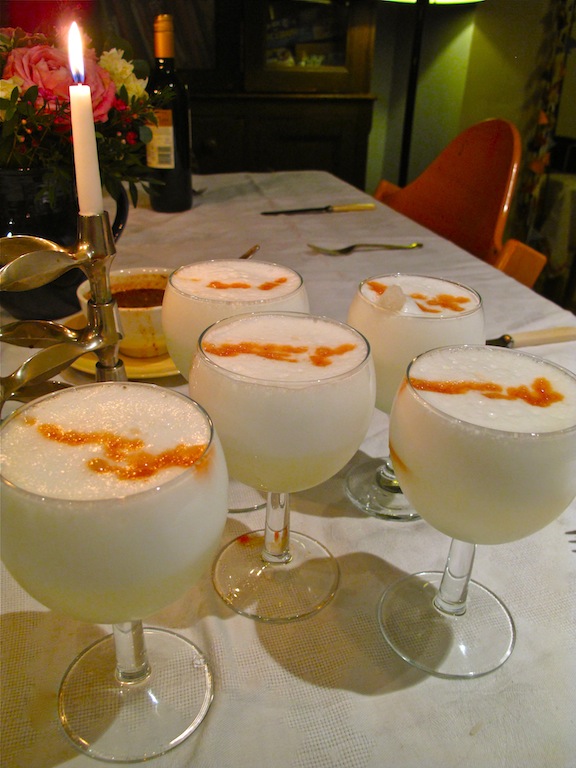
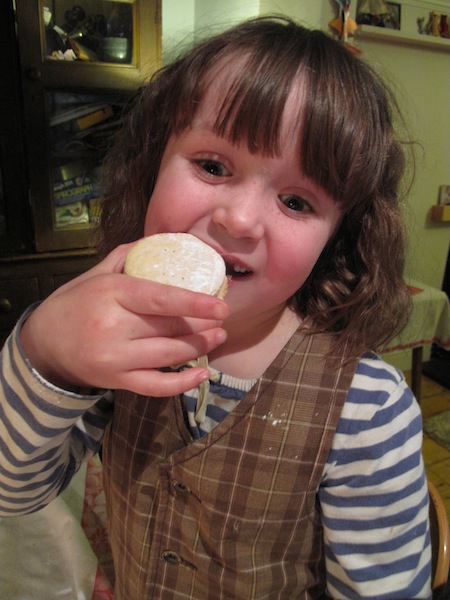

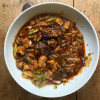
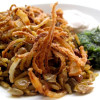
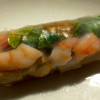

Derryk I am amazed! your blog just gets better and better!
Hi Derryk, thanks for a brilliant whistle-stop tour of Peruvian cuisine!! I’m just about to launch a website of Peruvian ingredients (aji panca, amarillo etc) and doing some research to see who’s saying what as Peruvian food starts to gain some ground in the UK… glad to see you have enjoyed exploring it as much as I have 🙂 I’ve seen a lot of recipes that are using ‘general’ chillies, but if you’ve ever been to Peru you’ll know that the people there are VERY particular that their chillies are not just any of chilli and to get Peruvian food right we really need amarillo, panca and rocoto!!
If you get chance to take a look at vivaperu.co.uk any feedback would be massively appreciated, it’s early days here!
Will look forward to seeing more posts 🙂
Adam
Hi Adam. Thanks for the comment. Really appreciate it. Great news with your site – I struggled to find Inca Kola, freeze dried potatoes, purple corn and a few other things so it would be good to have an online resource. Got the Aji Panca and Aji Amarillo at CHILLIESontheWEB.co.uk. You should check out this guy: http://www.fabcooking.co.uk.